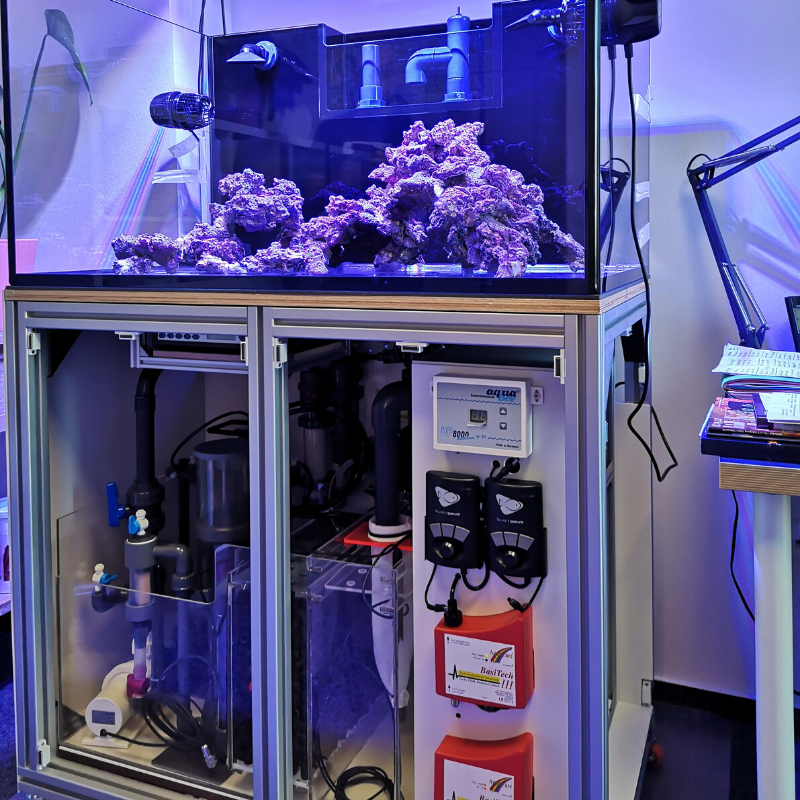SETTING UP A REEF TANK - 7 MOST COMMON MISTAKES

Even before you put the first drop of water into your aquarium, there are a few things to consider. We give you tips on how to avoid the following mistakes.
#1 Underestimating the total weight
An aquarium with decorations and water can quickly become very heavy. For tanks over 300 litres, it is therefore worth taking a look at the permissible load capacity of the ceilings or, if necessary, consulting a structural engineer.
#2 Too small dimensions of the technical tank
In the event of a power or pump failure, the technical tank should be large enough to collect the water that flows back. You can also leave some space so that you can easily install additional filters, integrate an algae refuge or set up a coral breeding area later.
#3 Install technology that requires maintenance and care in hard-to-reach places
There is no point in installing the skimmer in the furthest corner if you have to clean the pot every week. It is best to think about cleaning it before you start using it - this way you will have less trouble later and the regular maintenance work will be much easier.
.png)
This picture is perhaps not the best example of a large, spacious technical tank. However, the height of the base cabinet is well chosen to allow all maintenance work to be carried out without any problems. The power strips are fixed and hidden behind the paneling on the side. The white walls of the base cabinet are held in place by magnets and can be removed as required.
#4 Sockets on the floor
Sockets and distribution boards should not be carelessly scattered on the floor near the aquarium. It is best to use splash-proof damp-proof sockets and fix them firmly at elevated points or upside down in the aquarium cabinet. This prevents water from penetrating and causing a short circuit.
#5 Too little flow
The role of the current is often underestimated. The water should not only move, but should also, if possible, wash around the entire decoration so that no "rotten corners" are created. Corals also need a current to enable an exchange with the body of water. Only then can sufficient nutrients and trace elements be supplied and pollutants removed. As a guideline, at least 10 - 15 times the volume of the tank should be circulated per hour. Current is also important for fish, as they sometimes even base their territories on the current pattern.
.png)
SPS corals like this beautiful Acropora require a lot of current and can tolerate a circulation of 30-50 times the tank volume per hour.
#6 Make it more complicated than it is
KISS – “Keep It Stupid, Simple” – means keeping everything as simple as possible. Especially when you’re just starting out, you should stick to the basic equipment and the manufacturer’s recommendations. Adventurous lighting settings or innovative homemade solutions can (and certainly don’t have to) backfire.
#7 Don’t use a pad
A glass aquarium should not be left "naked" on the ground, but should be placed under it with polystyrene or a mat if possible. This will even out small bumps in the floor or shelf and balance out the load on the panes. There should also be no load on the aquarium from above (such as a table top).
We ourselves have already become acquainted with the last point: A friend of mine set up a "counter aquarium" in his shared flat (luckily there were no fish in it yet - but there was water). When three strong men leaned on the counter with their beer, there was a "CRACK" and the aquarium water ran through the living room. We hope, of course, that this doesn't happen to you and wish you lots of fun setting up your saltwater aquarium!







